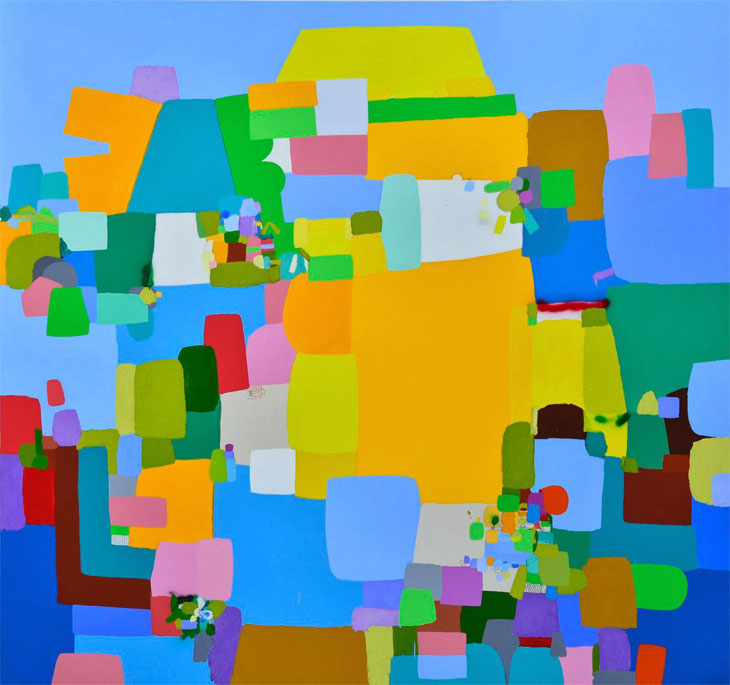
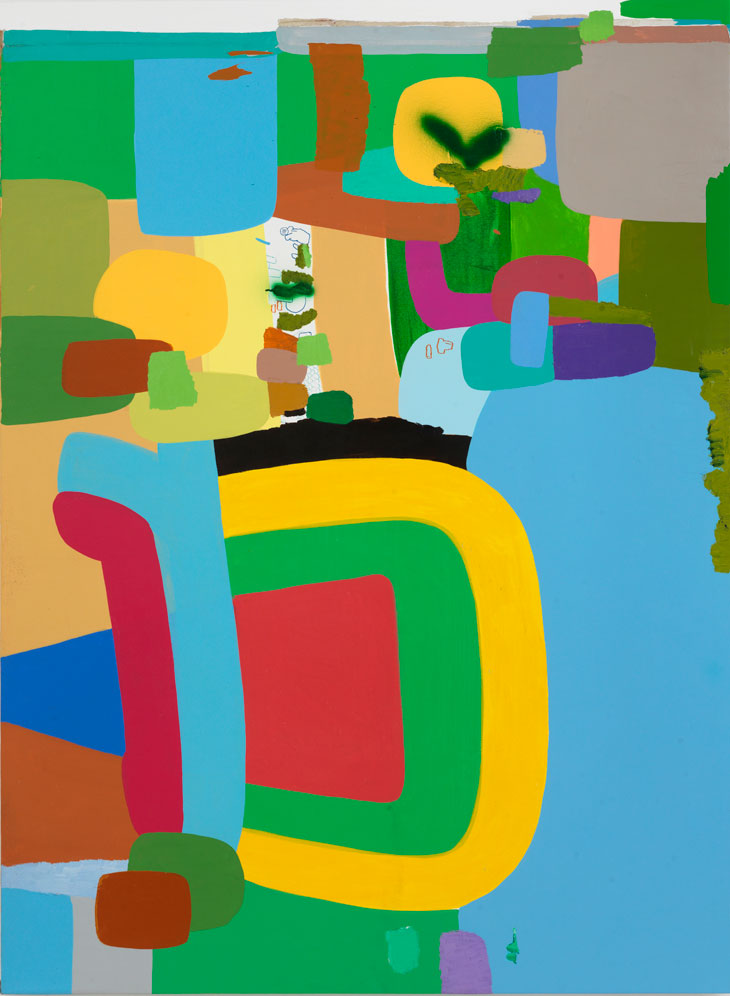
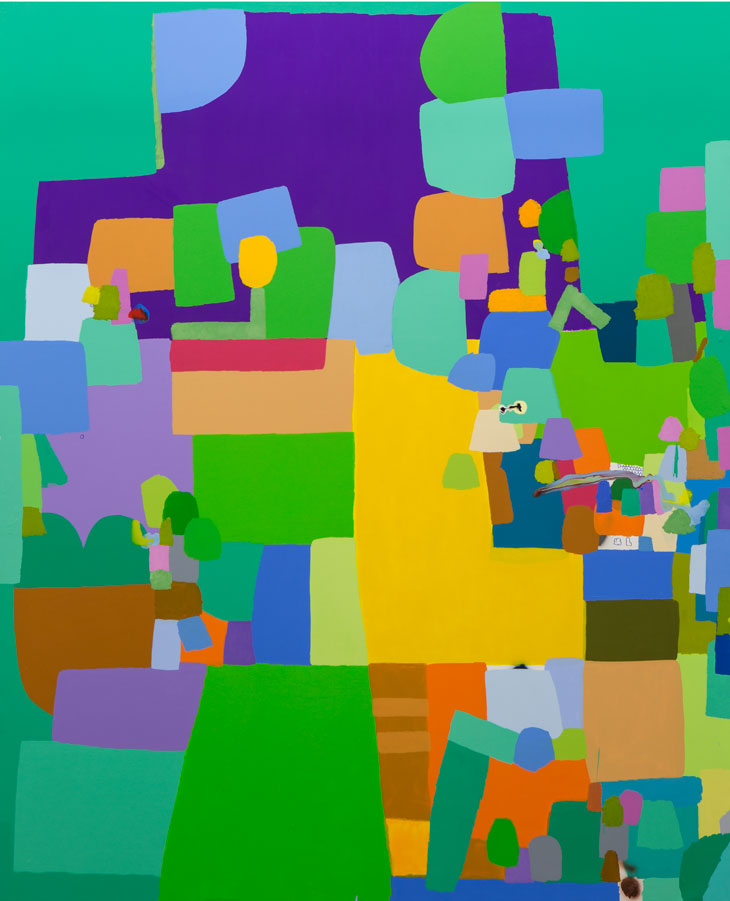
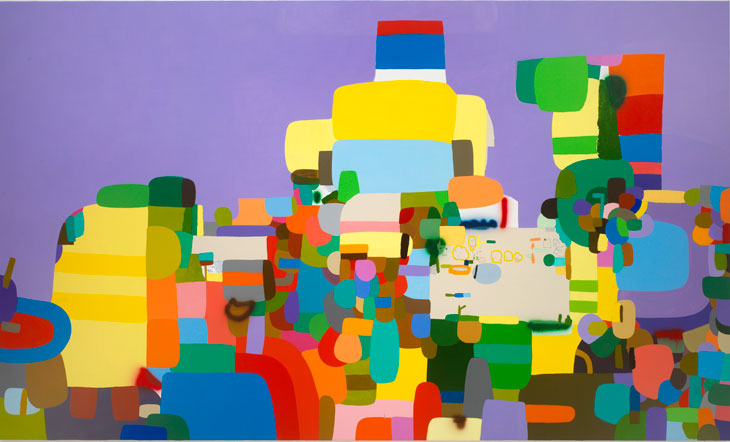
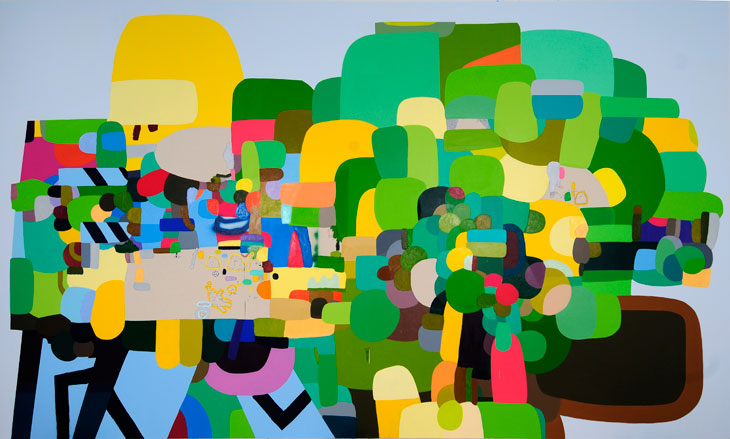
Federico Herrero
Herrero’s paintings offer as many possible readings as they do layers of colour and form. The roofs and ceilings of San José, with rectangles of various shades of cadmium yellow (Zipacna, 2014), recall the colour palettes of Brazilian modernism. Meanwhile, the flat masses of paint in blue and green that descend into pastel colours of pink, sky-blue, violet and orange (Untitled, 2008) reveal an even broader visual spectrum. Each painting is the continuation of another; they propose a version of events, a map of subconscious dreams and fantasies illuminated by the artist’s interior world. Herrero’s abstractions are rather like mental forms distorted by personal memories from daily experiences of a local environment.
They are also immediately accessible to a spectator, who might view this surface tension (shapes, colours, forms) as friendly and playful compositions of a social intent. The pluralism of visual culture allows for a mutability of meanings, making Herrero’s fantastical dream world of complex mental territories one of universality.
© Osei Bonsu, 2014
Federico Herrero’s tropically coloured geometric compositions have been painted on floors, walls, parking garages and even buses around the world. Such is the widespread application that encountering these compositions as singular objects can lead one to forget how they came into being in the first place. Since Herrero began hanging his work on trees in his native of San José, Costa Rica, the enduring aesthetic of the artist’s expansive paintings continues to appear in a range of forms and permutations. On Herrero’s colourful planes, landscapes of mental processes map a chromatic and compositional subjectivity. Beginning as an encounter with a site, which could be the surface of a canvas or a public façade, the artist’s characteristic style envelopes space to force renewed understandings of distance and proximity.
Herrero’s unrestricted sense of space brings together the site of artistic production and a conception of public space unique to the urban environment of San José. Growing up in a city marked by a complete lack of urban planning can be chaotic, but it is the geography of such activity that influences Herrero’s paintings. At times they appear to show an aerial view of downtown areas, with its old Spanish grid model disbanding into an endless labyrinth of seemingly never-ending suburbs (Amansalva, 2014).
In another moment, they transgress outlines becoming neither pictorial nor linguistic forms of communication. They intercept the logic of urbanism, one that does not grow vertically but horizontally creating a continuous and undefined periphery.




